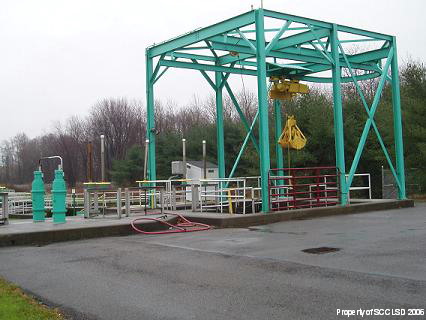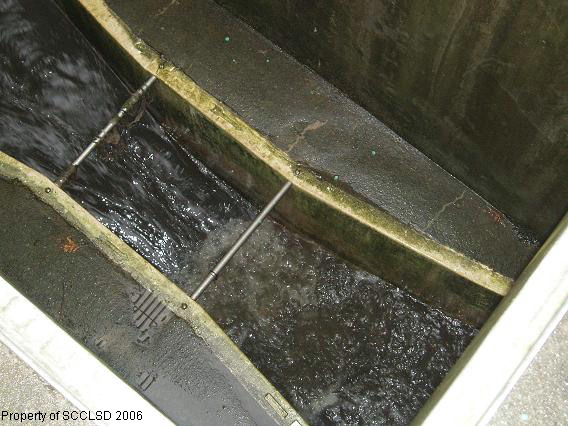
PRELIMINARY TREATMENT

Here we are at the beginning. This is where all flow enters the treatment plant. To begin treatment, screens remove large floating objects from the incoming water. Treatment plant screens are sturdily built to withstand the flow of untreated wastewater for years at a time. Rags, wood, plastics, and other floating objects could clog pipes and disable treatment plant pumps if not removed at this point. Typically, screens are made of steel or iron bars set in parallel about ½ inch apart. Our plant also uses a device known as a comminuter which combines the functions of a screen with that of a grinder. Sand, grit, and gravel flow through the screens to be treated in the next stage. It is called the Grit Chamber and is the area under the green framework in the above picture. Grit chambers are large tanks designed to slow the wastewater down just long enough for the grit to drop to the bottom. Here there are two tanks each with a capacity of 25,000 gallons. Periodically, the grit must be removed. One of the two tanks is drained, and the yellow clam bucket is lowered to scoop the grit out. It is placed in a lined dumpster and hauled to a landfill. As the water leaves the Grit Chambers, it passes through a restricted area called a Parshall Flume.

Basically it is a narrow place in an open channel which allows the quantity of flow to be determined by measuring the depth of flow. It is necessary to know the quantity of wastewater flow so adjustments can be made on pumping rates, disinfections rates, aeration rates, and other processes in the plant. Flow rates must be known also for calculation of loadings on treatment processes and treatment efficiency.